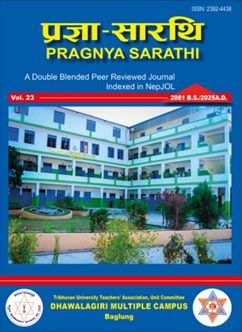Violence on Womb and Selfhood in Atwood's The Handmaid's Tale
DOI:
https://doi.org/10.3126/ps.v23i1.77527Keywords:
Body, handmaid, politics of dualism, violence, wombAbstract
This research analyses the violation of woman’s body, especially the womb in the novel The Handmaid's Tale by Margaret Atwood. It exposes the mechanical and problematized relation of Offred-the handmaid with the Commander linking especially to her womb. Capturing of women’s womb under fundamentalist regime indicates complexity accompanying gender deterioration due to the historical silencing of women on the one hand and on the other, it shows humanity’s failed attempt to understand women’s body, particularly the womb. In this regards, the paper takes the womb figuratively as the natural entity because women and nature share an age-old association. Violence on body through womb by the dominant Gilead subverts the selfhood of Offred which she cannot escape. This paper is qualitative in nature and brings theoretical insights from feminism. Many things are forbidden in the Gilead society for women, they are often called handmaids if they could bear children. They struggle to maintain the identity as a human being but this is in vain due to the oppressive regime or nation of the Republic of Gilead. Drawing the theoretical insights of Helene Cixous, Simone de Beauvoir, and Judith Butler, the paper argues that women’s domination under the tyrannical rule further degrade nation itself where the seed of resistance is visible in the character ‘Offred’.
Downloads
Downloads
Published
How to Cite
Issue
Section
License
Copyright (c) 2025 The Author(s)

This work is licensed under a Creative Commons Attribution-NonCommercial 4.0 International License.
This license enables reusers to distribute, remix, adapt, and build upon the material in any medium or format for noncommercial purposes only, and only so long as attribution is given to the creator.




